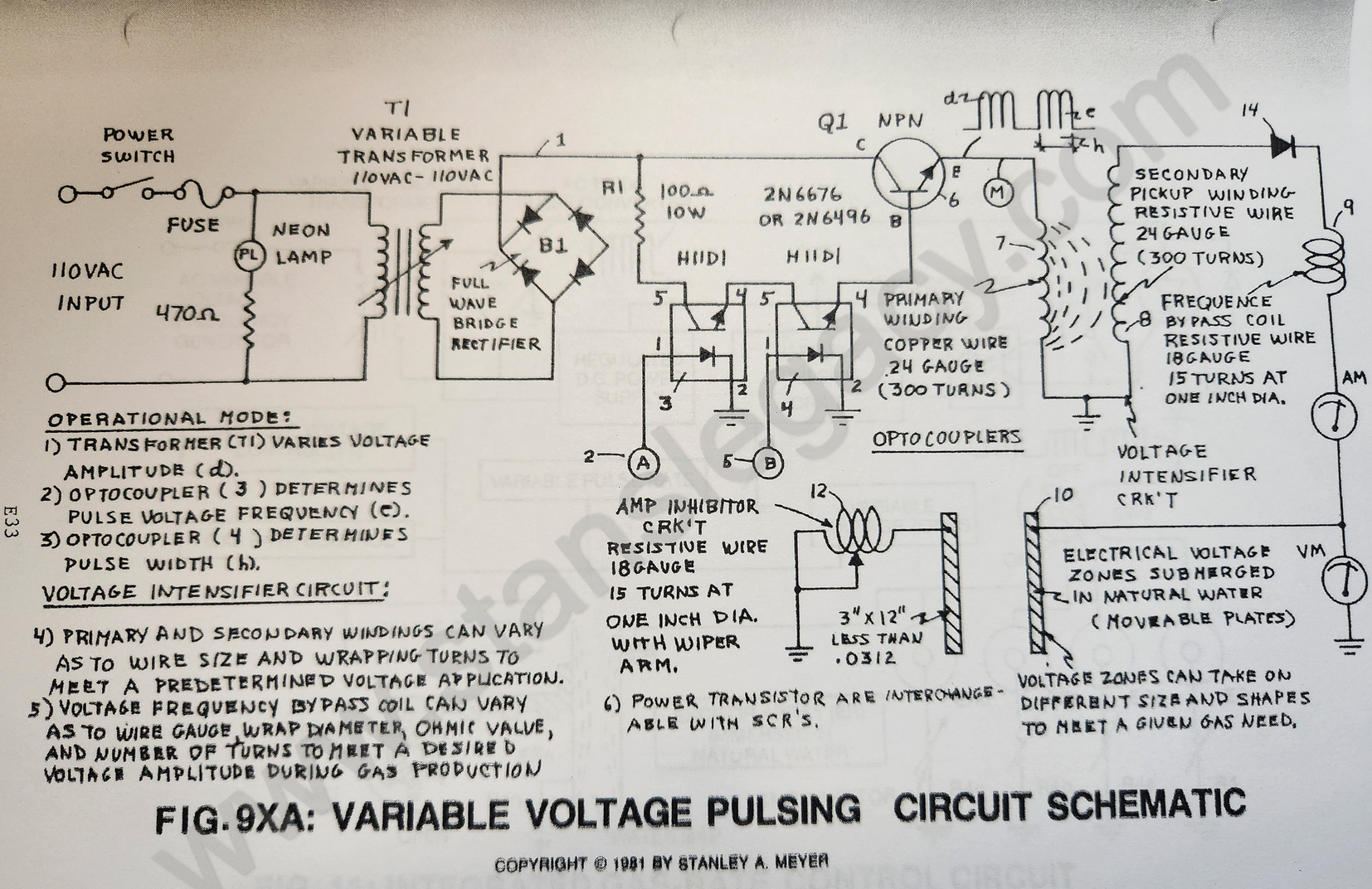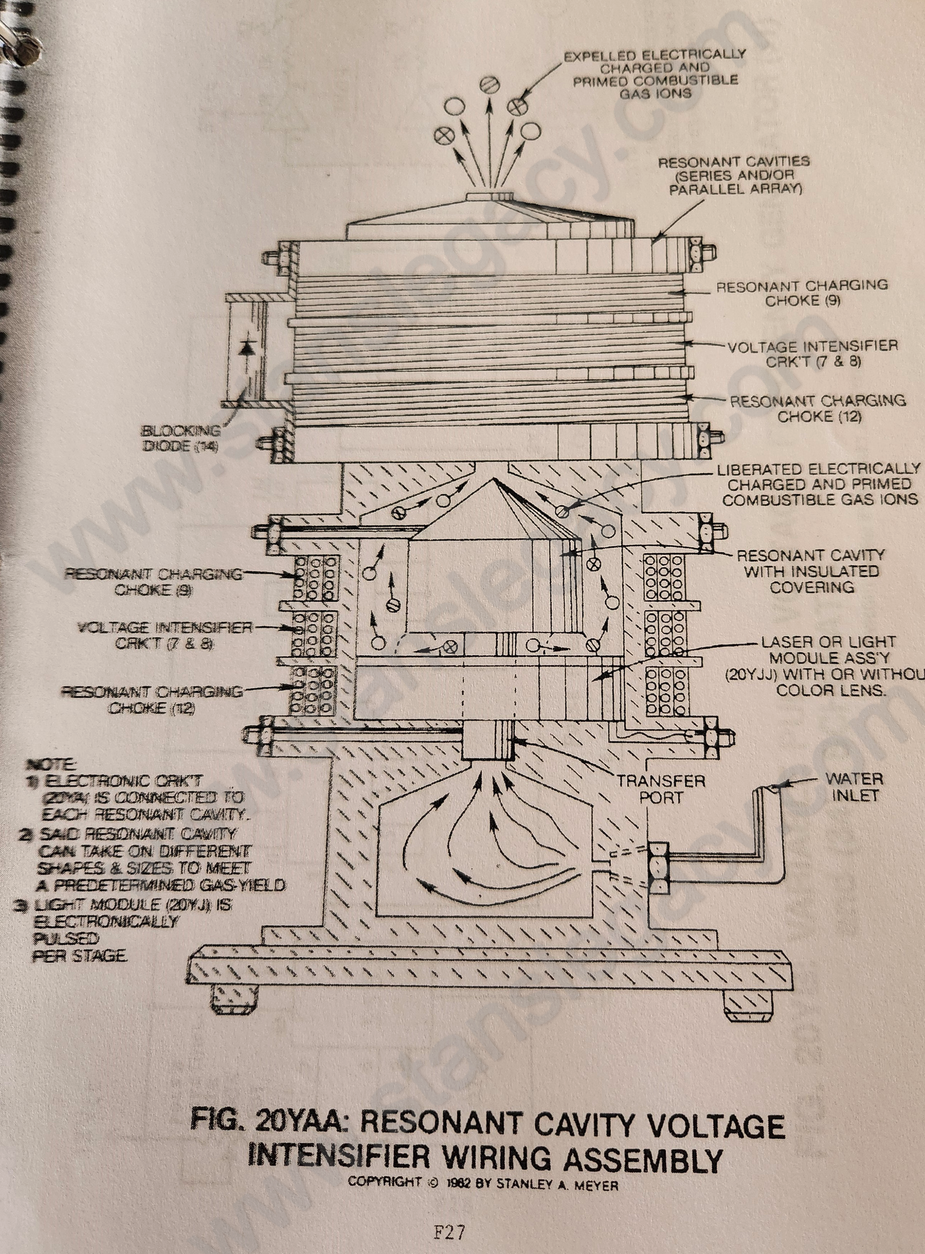Dual Voltage Resonant "Q" - Part 2
Resonant Charging Choke (43)
Said Resonant Charging Choke (43) is a Modulator Inductor which sets up an oscillation of a given charging frequency (voltage pulsing rate) with the effective capacitance of a pulse-forming network in order to charge a line to high voltage.
See Modern Dictionary of Electronics 5th Edition by Rudolf F. Graf.
The resistive value of said Charging Choke (43) acts as a resistor, preventing amp flow still further.
Electrical Voltage Zones (44/45)
Said High Voltage Output from said Resonant Charging Choke (43) forms a Positive Electrical Voltage Pulse Potential (voltage zone) across surface area (45) immersed in natural water, see step-charging graph 16A as to 20YA Section AA again.
Scientific Fact:
Stainless Steel Material T304 forming said voltage zone (45) does NOT chemically interact with liberated hydrogen, oxygen, and ambient air gases in natural water when exposed to a voltage potential during amp restrictions.
Capacitance
Capacitance value is formed between said conductor plates 44/45 (voltage zones) since the dielectric value (the insulating or non-conducting medium between two plates) of natural water is relatively high.
This opposes any changes in circuit voltage.
A voltage change cannot occur until the stored charges can be altered through current flow... if allowed.
Component arrangement of said Voltage Intensifier Circuit 9XA as to 20YA retards or prevents amp flow.
 |
 |
Scientific Fact:
Distilled water is an insulator to the flow of amps; natural water has less than 20ppm of any type of contaminates and maintains a high dielectric constant.
Resistor Component (47)
Another Resonant Charging Choke (47) is placed between said negative voltage zone (44) and said circuit electrical ground (48) to help maintain the resistance value (voltage level) within the Resonant Cavity during charging.
The resistive value of said wire-coil (47) prevents amp flow while performing in like manner as a Resonant Charging Choke.
Resonant Action as to Voltage Stimulation of the Water Molecule
Resonant Action occurs when the Voltage Intensifier Circuit 9XA as to 20YA set up a circuit condition whereby the inductive (43/45) and capacitive reactance (44/47) (or circuit impedance) components of said circuit have been balanced.
The Circuit is "tuned" to resonance at a certain pulse voltage frequency (reaching resonant "Q")...
allowing voltage stimulation of the water molecule...
performing the Electrical Polarization Process at Resonant "Q."
Scientific Fact:
The ability of an inductor and a capacitor in a series-resonant circuit delivers a voltage several times greater than the input voltage.
Resonant Cavity Structure vs Applied Pulse-Voltage
By simply varying the applied voltage amplitude in direct relationship to a variable pulse voltage frequency, the Resonant Cavity Structure can take on different shapes to maximize voltage stimulation of the water molecule to release hydrogen gas under control means.
Voltage range from zero to 5,000 volts; pulse-voltage frequency range from zero to one megahertz; amp flow being restricted to a minimum value.
Dual Voltage Resonant "Q"
Low Amplitude Pulse Voltage Frequency (54) is injected between Pulse Voltage Frequency (53) to keep an electrical charge on said water molecule during Resonant "Q."

